Everest Base Camp Trek - 17 Days
-
max altitude 5,640 m
-
Group Type 2-15 pax
-
Trip grade Moderate to Strenuous
The Everest Base Camp is the adventure of a lifetime and every hiker's dream - to stand in awe of the world's highest mountain while surrounded by pristine nature.
The journey to Everest starts with a spectacular flight over the mountains to Lukla, the gateway to Khumbu. Over the next 2 weeks, you will get to experience the famous Sherpa hospitality, culture and way of life, all the while soaking in spectacular sights and sounds of the mountains. The journey takes you to upper Khumbu which falls under the Sagarmatha National Park and is extremely well conserved and protected. The change in landscape, flora and fauna as you traverse across deciduous forests, sub-alpine terrain and finally into the alpine zone, a.k.a. the heart of the mountains, is sure to imprint an everlasting memory.
We invite you to join our 17-day Everest Base Camp trek. With over 25 years of experience in the Nepali mountains, our program is sure to create a magical experience.
Trip Highlights
- Scenic mountain flight over the himalayas to/from Lukla, the gateway to Everest
- Guided tour of 4 UNESCO heritage sites in Kathmandu
- Explore the land of Sherpas, their culture and serene landscape of the Sagarmatha National Park
- Experienced, professional and expert team of professionals to guide you on an experience of a lifetime in Nepal
Outline Itinerary
Day 01: Arrive at Kathmandu and transfer to hotel
Day 02: Guided full day tour of Kathmandu valley heritage sites
Day 03: Fly to Lukla (2,880 m) & trek to Phakding (2,640 m)
Day 04: Trek from Phakding to Namche (3,440 m)
Day 05: Acclimitization day - explore Namche and Khumjung (3,800 m)
Day 06: Trek from Khumjung to Deboche (3,716 m)
Day 07: Trek from Deboche to Dingboche (4,352 m)
Day 08: Rest day at Dingboche | Excursion to Nangkartshang Peak (4,855 m)
Day 09: Trek from Dingboche to Lobuche (4,920 m)
Day 10: Trek from Lobuche to Gorakshep (5,180m). Excursion to Everest Base Camp (5,364m) and back to Gorakshep
Day 11: Morning excursion to Kalapattar (5,640 m; 3-4 hrs), and descend to Pheriche (4,276 m)
Day 12: Backtrack to Kyangjuma (3,600 m)
Day 13: Backtrack to Monjo (2,830 m)
Day 14: Backtack to Lukla (2,880 m)
Day 15: Morning flight from Lukla to Kathmandu. Rest of the day at leisure.
Day 16: Morning guided tour of Pashupatinath and Boudha. | Afternoon at leisure.
Day 17: End of Trip - Departure
Full Board Service Details
What's included
- 4 night 3 star hotel in kathmandu
- Flight to KTM-Lukla-KTM
- Transport: Airport pick up and drop
- English Speaking Government licensed holder Trekking guide
- Assistance Guide and porters
- Foods and Accommodation in T-house lodge ( 3 meals a day with tea, coffee)
- All Nepali staff and porters insurance during the trip
- National Park fee, TIMS Permit
What's not included
- Lunch & Dinner during Kathmandu stay
- Personal trekking warm clothes, sleeping bag
- High risk medical insurance
- International air ticket.
- Alcohol , beverages & telephone calls
- Emergency rescue evacuation if needed.
- Tips (end of the trip) for your trekking staff and porters.
- If bad weather and other natural disasters circumstance makes your trip longer than our estimate itinerary and the cost will be extra!
Detail Itinerary
Day 01: Arrive at Kathmandu and transfer to hotel
Depending on how you plan to arrive at Kathmandu, we will arrange for you to rendezvous at your hotel in Thamel. In most cases, you will arrive at Kathmandu via Tribhuvan International Airport where you will meet your guide.
In the evening, you will join for a program briefing with your group members. In case you arrive late at night, you will meet your group members next day at breakfast during which you will also be briefed about your program.
Accommodation: 3-star hotel in Kathmandu
Meals: None
Transportation: Private Transfer
Max. Elevation: 1,400 m
Day 02: Guided full day tour of Kathmandu valley heritage sites
Today, you will embark on a walking tour of two UNESCO heritage sites; the Swayambhunath Stupa and the Kathmandu Durbar Square.
The Swayambhunath Stupa lies atop a hill north-west of Thamel. It is the oldest religious site in Nepal and an important pilgrimage site for both Hindus and Buddhists. The main temple complex overlooks the Kathmandu valley and in the olden days offered clear views of the Kathmandu Durbar Square and the old city of Kathmandu.
Bidding farewell to the sights and sounds at Swayamabhunath, you will head towards the Kathmandu Durbar Square (palace courtyard). The courtyard is a complex of structures of the royal palaces, quadrangles, towers, temples, and monuments of the Malla kings of Kathmandu. Plus, you will also get to visit the palace museum which are now open to visitors. The 2015 Nepal earthquake landed significant damages to the palace but renovations are in full swing. Click this link to know more about Kathmandu Durbar Square.
After Kathmandu Durbar Square, you will head back to your hotel in Thamel via the Asan Market, the traditional bustling market area and a hub of Newari culture where for centuries merchants from India and Tibet, alongside farmers and others, have fared their goods. The market offers everything; from foodstuff and traditional spices to electronics. But keep in mind the narrow streets lined with a mix of old traditional houses with ornately carved doors and window frames, important temples, and modern concrete houses, and a bustling crowd of shoppers.
At Thamel, you will attend a last-minute brief on your Everest Base Camp Trek and prepare all required essentials, and in the evening join a group dinner to celebrate your arrival in Nepal.
Accommodation: 3-star hotel in Kathmandu
Meals: Breakfast & Dinner
Transportation: None
Max. Elevation: 1,400 m
Day 03: Fly to Lukla (2,880 m) & trek to Phakding (2,640 m)
You will start early for the long day ahead with a quick tea and drive to Kathmandu domestic airport for a scenic flight to Lukla, the gateway to Khumbu. In clear weather, you will have ample views of the Himalayas as you fly over rivers, forests, mountain passes and tiny settlements.
At Lukla, you will be welcomed by majestic views of Mt. Karyolung (6465 m), Mt. Khatang (6776 m), Mt. Nupla (5869 m), and the rest of your trek crew. After sorting out your bags, you will begin the day's hike on a gentle undulating trail high above the Dudh Koshi river.
On the trail, you will get to interact with the local Sherpa people who are mostly Buddhists. The major attractions of the day include the suspension bridge crossing over the landslide at Ghat, a huge boulder painted with Tibetan scriptures, and a mane wall just before arriving at Phakding - your destination for the day. Also, the gorgeous Mt. Thamserku (6623m) will reveal itself and welcome you to the Himalayas just before you arrive at Phakding.
Accommodation: Local Lodge at Phakding
Meals: Breakfast, Lunch & Dinner (Fruits and Canned Desert Optional)
Transportation: Private Transfer
Kathmandu - Lukla flight duration: 25 minutes
Total Hiking Distance: 7.9 km
Approximate Hiking Time: 3 hrs
Total Ascend: 245 m
Total Descend: 430 m
Max. Elevation: 2,880 m
Day 04: Trek from Phakding to Namche (3,440 m)
Another superb day of hiking, you will start the day with a hearty mountain breakfast. The undulating trail can be challenging but equally rewarding. A few minutes our of Phakding, you might see wild honey bee hives high up on mountain cliffs. The trail gets exciting when you reach the landslide crossing at TokTok, and is followed by a small waterfall at Benkar. A river crossing above a suspension bridge after Benkar brings you to the quaint little hamlet of Monjo where you will need to show your National Park permits at a checkpoint. You will then continue to Jorsalle, where you can enjoy local cuisine with views of the famous twin suspension bridge over the Dudh Koshi river.
After lunch, you will cross the suspension bridge and begin a slow grueling climb up a steep trail to Namche. As you climb, during clear weather, you might get a first peek at Everest (8848m), Nuptse (7879m) and Lhotse (8383m) at Top Danda. Once you arrive at the bustling town of Namche, you have the rest of the day at leisure to either explore the town and indulge in luxury - proper coffee and delicious bakery, shop for gears at one of the many stores in town or just call it a day with a book in your lodge.
Accommodation: Local Lodge at Namche
Meals: Breakfast, Lunch, Dinner and Dinner (Fruits and Canned Desert Optional)
Total Hiking Distance: 14.5 km
Approximate Hiking Time: 5 to 6 hrs
Total Ascend: 1,135 m
Total Descend: 340 m
Max. Elevation: 3,440 m
Day 05: Acclimatization day - explore Namche and Khumjung (3,800 m)
You will begin your acclimatization routine of gradually climbing high today. In the morning, you can explore the beautiful town of Namche, visit the local museum, and explore the nooks and crannies in search of yourself.
After lunch, you will hike to Khumjung and Khunde, where you can visit the Khumjung Hillary School and the Khunde monastery. Also, we suggest climbing down to the Everest view point for a panoramic sunset over the Himalayas.
Accommodation: Local Lodge at Khumjung
Meals: Breakfast, Lunch, Dinner and Dinner (Fruits and Canned Desert Optional)
Total Hiking Distance: 3 km
Approximate Hiking Time: 3-4 hrs
Total Ascend: 345 m
Total Descend: 96 m
Max. Elevation: 3,875 m
Trek from Khumjung to Deboche (3,716 m)
You will start the day with a short - 20 minute descend to Sansa, followed by a further descend to Phunke Tenga, a small hamlet besides the Dudh Koshi river. After lunch, the trail steeply ascends to Tengboche through a pine, juniper, rhododendron and Himalayan birch forest. At the top of the climb is the Tengboche village and home to the famous Tengboche Monastery. After exploring the monastery, you will descend gently through a pine, juniper, rhododendron and Himalayan Birch forest to Deboche.
Please note: the forest is protected as part of the Sagarmatha national park and is an important habitat of Alpine musk deer, the inquisitive Pika, Eurasian lynx, red foxes and other animals. We advise you to not disturb the forest as much as possible and keep an eye out for rare wildlife sightings.
Accommodation: Local Lodge at Deboche
Meals: Breakfast, Lunch, Dinner and Dinner (Fruits and Canned Desert Optional)
Total Hiking Distance: 7.2 km
Approximate Hiking Time: 4-5 hrs
Total Ascend: 726 m
Total Descend: 796 m
Max. Elevation: 3,834 m
Day 07: Trek from Deboche to Dingboche (4,352 m)
Today marks another milestone on your Everest Base Camp journey as reach 4,000m.
After breakfast, you will arrive at a river crossing over the Imja Khola that leads to Pangboche village. And just across the river, you will be greeted by the most stunning view of Amadablam; the marvelous mountain with its dazzling twin peaks and in full view is truly a sight to behold.
Every Sherpa village has a stone gate engraved with sacred prayers and scriptures, which the locals believe wards off evil spirits. At the Pangboche village stone gate, you will come across two paths; one leading to upper Pangboche where lies the Pangboche monastery, the most famous and oldest monastery of the Khumbu region, and the other trail that leads to the Pangboche village. The Pangboche monastery is also said to house a yeti skull, and is open for viewers.
From the Pangboche village, you will take the well-trodden higher trail to Somare and continue on your journey to Everest Base Camp. The lower trail across the village takes you across the settlement of lower Pangboche, and to the Imja river. The trail across the river leads to Ama Dablam base camp.
After a short walk, you will arrive at the 4,000m mark at Somare - beyond which vegetation is sparse. After lunch at Somare, you will continue on an even trail until you arrive at the climb up to the rim of the Dingboche valley. The Dingboche valley is shaped like a basin and has a few lodges. Hereon, electricity is a luxury as there are no transmission lines. The only source of electricity is batteries charged by solar panels – hence why you will need to pay to charge your phone and other electronics. Regardless of the hardships, on clear days, you be accompanied by superb scenery throughout the trail.
Accommodation: Local Lodge at Dingboche
Meals: Breakfast, Lunch, Dinner and Dinner (Fruits and Canned Desert Optional)
Total Hiking Distance: 10.7 km
Approximate Hiking Time: 5-6 hrs
Total Ascend: 1,041 m
Total Descend: 427 m
Max. Elevation: 4,352 m
Day 08: Rest day at Dingboche | Excursion to Nangkartshang Peak (5,052 m)
Because you've crossed the 4,000 m mark, you will further the acclimatization routine by climbing high to Nangkartshang Peak and sleeping low at Dingboche.
Nangkartshang Peak lies directly north of the Dingboche valley. Except for some minor scrambling on some dirt and loose stones plus the altitude, it is for the most part an easy ascent to Nangkartshang. You will arrive to a panoramic view of Kangtega, Ama Dablam, Nuptse, Lhotse, Makalu, Cho Oyu, Taboche, along with three highest mountains in the world; Mt. Makalu (8,463m), Lhotse (8,749m), Cho Oyu (8,201m) in the horizon at the Nangkartshang Peak summit. Plus, Imja Glacier on the valley floor is a wonderful sight.
Accommodation: Local Lodge at Dingboche
Meals: Breakfast, Lunch, Dinner and Dinner (Fruits and Canned Desert Optional)
Total Hiking Distance: 6 km
Approximate Hiking Time: 3-4 hrs
Total Ascend: 700 m
Total Descend: 700 m
Max. Elevation: 5,052 m
Day 09: Trek from Dingboche to Lobuche (4,920 m)
From Dingboche onwards, the settlements and vegetation is sparse, the air thin and the land dry, almost like a dessert, but you will find yourself inching closer to the mountains with every wheezy breath.
The morning doesn't offer much in terms of change in views. You will arrive at Thukla by taking the high trail above the Lobuche river, and spend some time waiting for lunch. The steep trail to Lobuche is clearly visible and doesn't look like much. But the ascent to Thukla pass takes a toll as you will need to vertically climb almost 220 m. At the pass, a wide field opens up where an Everest memorial park has been established in memory of those who've perished while trying to summit Everest. Stone cairns adorn the field and add a touch of melancholy. You will now follow the Lobuche river all the way to Lobuche village, the last permanent settlement on the EBC trail.
Accommodation: Local Lodge at Lobuche
Meals: Breakfast, Lunch, Dinner and Dinner (Fruits and Canned Desert Optional)
Total Hiking Distance: 9.2 km
Approximate Hiking Time: 4 hrs
Total Ascend: 952 m
Total Descend: 379 m
Max. Elevation: 4,920 m
Day 10: Trek from Lobuche to Gorakshep (5,180m) | Excursion to Everest Base Camp (5,364m) and back to Gorakshep
Its finally the day you've waiting for - the highlight of your trek - Everest Base Camp.
You will start early in the morning to get back on the EBC highway. The hike starts easy as you steadily climb along the Khumbu Glacier till the trail drops to a run-off and climbs on the other side to arrive at the Gorakshep valley rim. Gorakshep is a temporary settlement of lodges, occupied only during trekking season, that sits on the edge of a frozen lakebed. The surrounding views, except for the throng of people, yaks and helicopters, are superb but almost unearthly - as if you've transported to some distant planet full of rocks, endless sky and colossal peaks.
After a quick lunch and unpacking, you will hike towards the EBC which is almost 3 hrs away. The trail is mostly scree and ascents and dips to arrive at the Everest Base Camp. While you cannot see Everest from the base camp, only partially from the trail, the hike to the foot of the world's tallest mountain is one-of-a-kind experience, especially during climbing season in April-May when the base camp is covered in colorful tents and buzzing with excitement with Everest aspirants.
You will head back down to Gorakshep after spending sometime at the Everest Base Camp and we recommend to call it an early night as you'll need to recharge for the finale of your trek - Kalapattar.
Accommodation: Local Lodge at Lobuche
Meals: Breakfast, Lunch, Dinner and Dinner (Fruits and Canned Desert Optional)
Total Hiking Distance: 13.5 km
Approximate Hiking Time: 8 hrs
Total Ascend: 734 m
Total Descend: 527 m
Max. Elevation: 5,364 m
Day 11: Morning excursion to Kalapattar (5,640 m; 3-4 hrs), and descend to Pheriche (4,276 m)
Kalapattar excursion is grueling but equally rewarding - you will finally be able to see Everest in all its might and glory towering over both mountains and mortals.
You will start very early, preferably at 4.30 am. Initially, the hike is easy as you climb up to a well-trodden trail just north of Gorakshep but after about an hour, the path changes to loose rocks and boulders till the summit of Kalapattar. You will preferably arrive at dawn to witness the magnificent sunrise behind Everest, while its surrounded by its brothers and sisters, Nuptse, Changtse, Ama Dablam, Chumbu, Thamserku, Kangtega, Taboche & Lobuche.
While the views are amazing, it can get very windy very easily - mountain weather changes rapidly. Hence, you will descend down to Gorakshep for a hearty breakfast and retrace your steps to Thukla and finally down the valley and into Pheriche.
Accommodation: Local Lodge at Pheriche
Meals: Breakfast, Lunch, Dinner and Dinner (Fruits and Canned Desert Optional)
Total Hiking Distance: 17.1 km
Approximate Hiking Time: 8-9 hrs
Total Ascend: 518 m
Total Descend: 1,429 m
Max. Elevation: 5,640 m
Day 12: Backtrack to Kyangjuma (3,600 m)
The trail out of Pheriche eventually meets at Pangboche and you will retrace your steps back to the small settlement of Kyangjuma on the EBC highway.
Accommodation: Local Lodge at Kyangjuma
Meals: Breakfast, Lunch, Dinner and Dinner (Fruits and Canned Desert Optional)
Total Hiking Distance: 15.7 km
Approximate Hiking Time: 5-6 hrs
Total Ascend: 700 m
Total Descend: 1,253 m
Max. Elevation: 4,280 m
Day 13: Backtrack to Monjo (2,830 m)
You will backtrack on the same trail you started from almost a week ago and stay overnight at the quaint little village of Monjo.
Accommodation: Local Lodge at Monjo
Meals: Breakfast, Lunch, Dinner and Dinner (Fruits and Canned Desert Optional)
Total Hiking Distance: 9.7 km
Approximate Hiking Time: 4-5 hrs
Total Ascend: 988 m
Total Descend: 1,738 m
Max. Elevation: 3,600 m
Day 14: Backtack to Lukla (2,880 m)
Alas, your journey in the mountains have come to an end!
You will retrace your steps back to Lukla with ample sunlight to roam the mountain town, enjoy a delicious cup of coffee or go souvenir shopping. In the evening it is customary, but not compulsory, to celebrate and party with your crew and present a parting gift as the local crew will bid you farewell tomorrow.
Accommodation: Local Lodge at Lukla
Meals: Breakfast, Lunch, Dinner and Dinner (Fruits and Canned Desert Optional)
Total Hiking Distance: 14.5 km
Approximate Hiking Time: 5-6 hrs
Total Ascend: 928 m
Total Descend: 901 m
Max. Elevation: 2,880 m
Day 15: Morning flight from Lukla to Kathmandu. Rest of the day at leisure.
You will catch an early morning flight back to Kathmandu and have the rest of the day at leisure. We recomment getting a soothing massage after handing out your laundry for cleaning and getting a scrumptious dinner at one of the eateries in town.
Accommodation: 3-star hotel in Kathmandu
Meals: Breakfast
Lukla - Kathmandu flight duration: 25 minutes
Transportation: Private Transfer
Day 16: Morning guided tour of Pashupatinath and Boudha. | Afternoon at leisure.
This is actually a contingency day in case the flights out of Lukla can't take off due to unforseen reasons.
After breakast, you will embark on a guided tour of Pashupatinath Temple and Boudhanath Stupa; borth UNESCO world heritage sites, tll mid-afternoon. The rest of the day is at your own leisure.
Accommodation: 3-star hotel in Kathmandu
Meals: Breakfast
Transportation: Private Transfer
Day 17: End of Trip: Departure
Depending upon your exit plans, with the most probable being your return flight back home, your guide or a representative will accompany you to the Tribhuvan International Airport.
Trip Video
What is tea house trekking?
Tea house trekking is popular in Himalayan region. Local community run the tea house and lodge. They serve good foods (breakfast, lunch and dinner) these tea houses have good facility with hot water, comfortable rooms with attached bathroom, you can know the local culture, people and tradition and way of living in the trekking route.
What is camping trekking?
Camping trekking is organized and supported with team of professional guide, Sherpa, cook and porters. They accompany you, while trekking porters carry all the logistics like, tents, kitchen accessories, food, and fuel. Trekker should carry his/her minimal personal belongings while trekking.
What is the best time for trekking in Nepal?
The best season for trekking is March to May and September to November, during this period the weather is stable and clear, it is very wonderful time to experience the real Nepal to see the amazing view of mountains, snow caped Himalaya and flora and fauna and culture of local people in the Himalayan region.
How difficult is trekking as I aspect the route?
Trekking is challenging walk in the different altitude, landscape and terrain so it depends on the location and choice of the trekker and the trekking route. There are easy, difficult and extreme treks in the Himalayas. One can choose out of different options of trekking packages provided by the trekking company.
Is there any age limit for trekking in Himalaya?
There is no any age bar in trekking in the Himalaya. We design trek for children, teenager as well as senior citizen. For children and senior citizen we offer short and easy treks like around Kathmandu and pokhara valley. For adult and teenager we offer moderate and extreme trek.
Is trekking permit required?
Yes, you need trekking permit while trekking. Depending on the trekking area you require special permit like restricted area, for other you need conservation / National park entry permit and TIMS (Tourism information management system) card.
How can I book the trekking package?
First you need to log in to our web site HimalyanEcstasyNepal.com; you can get further information in our web site about booking the trekking package. If you are already in Nepal then you can visit our head office in Thamel in front of Kathmandu Guest House. Then we can arrange your trekking package according to your choice.
What type of insurance should I have to do before coming Nepal? Is there insurance facility there?
You should do your insurance from your respective country, which covers your risk, emergency evacuation by helicopter, medical treatment and other possible risks. Here is no policy as such.
Is it possible to communicate to my family while trekking?
You can have easy access to communication but in remote areas we use satellite phone. So communication won't be an issue.
What should be the criteria for physical fitness to trek in Nepal?
The trekker should have general physical fitness, some experience of hiking, should not have any chronic disease, cardio respiratory diseases etc.
Can I trek in the Himalayas of Nepal without prior trekking experience?
Yes you can trek without experience, but you should acclimatize first, have good health, we guide you according to your need, you can do difficult and extreme treks.
Is it necessary to use guide and porter while on trek in Nepal?
It is highly recommended as guide knows the route very well, and communication with local people is easier with guide. Security is the major issue.
Does HEN arrange domestic and international flights and booking hotels?
Yes HEN arrange domestic and international flights and book hotels, we serve this service to our costumers only.
What is the standard of water, sanitation and fooding and lodging while trekking?
As trekking is done in different landscape and trails, those routes are far away from pollution. Water here is drinkable but taking into consideration of our client's health and hygiene we provide mineral water which is purified and filtered. We provide standard and healthy foods. We provide best and comfortable lodging service available in trekking route.
Can I trek without porter and guide?
Yes you can trek without guide, but we suggest you not to trek without guide, due to security reason. Communication with local people, and trek route topography and weather as well as natural disaster are the challenges; if you go with guide it would be more comfortable for you.
How can I avoid blisters?
Shoe and socks should be comfortable, select right size, thick sole and matter of inner sole. If you have sweating feet then you have to change your socks frequently keep your feet clean and dry. You should carry blister prevention tape; skin tape can be helpful.
Do I need trekking pole?
Yes you do need trekking pole, it helps you save energy in high ascend and descend, if you have weak hips and knees and it helps to reduce the strain.
How will you help me if I suffer from altitude sickness or accident ?
Depending on the seriousness of the accident we provide first aid if not then company can arrange the evacuation operation to the nearest medical facility and in case of any emergency company could bring you to Kathmandu.
Where to stay during trekking?
You stay in local lodge or tea house; they have basic facilities like food, accommodation for sleeping and hot safe drinking water. Your guide helps you to accommodate in good lodge or tea house while trekking.
What is the guide's qualification who guides us?
We have government certified and experienced guide who can speak English very well, have good experience of trekking route and have good sense of humor, have knowledge to describe the local culture and community, biodiversity and flora and fauna.
What is the guides and porters safety and about their insurance?
We do insurance for guide and porters, we provide first aid kit for our staff's medicine, and provide emergency rescue. We are always conscious about the health and safety of guide and porters.
Is there tipping compulsory for guides and porters?
Tipping is not necessary for HEN staffs, although tipping for guide and staff is good practice, porter and guide expect tip, your tip helps their family.
How to avoid motion sickness ?
While trekking or driving you may feel motion sickness, vomiting there may be many reason, due to curves and the altitude complete different terrain and topography. Drink enough water while trekking, take lemon pieces, chew ginger or you can use motion-sickness tablets, such as Dramamine. You should not be worry about motion sickness, it is self treatable and get rid of it .
Trekking equipment
- XL /M size Duffle Bag
- Rucksack (40ltr-55ltr)
- Down Jacket
- Water proof Jacket
- Jumper or pile jacket
- Hiking shirts
- Hiking pants
- T-shirts
- Full –Sleeves shirts
- Sun hat
- Personal towel
- Sleeping bag – 200 above (3/4 season)
- Camp shoes
- Rain poncho or Umbrella(if you are summer travel)
- Plastics for cover your personal bag when gets rain
- Polypropylene /wool socks
- Water bottle
- Flash light
- Batteries and bulbs
- Medical& First-aid kit
- Swiss army knife
- Sewing kit
- Light weight fleece jacket
- Wool long under wear
- Light cotton socks for under wools socks
- Woolen socks to wear with boots
- Mountain trekking boots/ water prove shoes
- Insulated pants
- Nylon wind stopper
- Nylon wind pants
- Long under ware
- Woolen hat
- Gloves /fleece/mitten
- Gaiters
- Goggles or sunglass UV protected
- Sun block
Toiletries
- Camera /memory stucks
- 1 medium sized quick drying towel
- Toothbrush/paste (preferably biodegradable)
- Multipurpose soap (preferably biodegradable)
- Deodorant
- Nail clippers
- Face and body moisturizer
- Feminine hygiene products
- lip balls/ sun creams UV protect
- Mosquito protect creams (required only summer)
- Personal your nature things
Client Review(s)

"Trek Filled with Fun, Energy, and Beauty"
I recently completed the Everest Base Camp Trek with Himalayan Ecstasy Nepal, and it was an experience to remember! Anil, our guide, was the highlight of the journey—his humor kept us laughing through the toughest parts, and his energy was contagious. He made sure everyone was comfortable, informed,
Our Best Selling
Our collection of the most best selling packages in 2025-
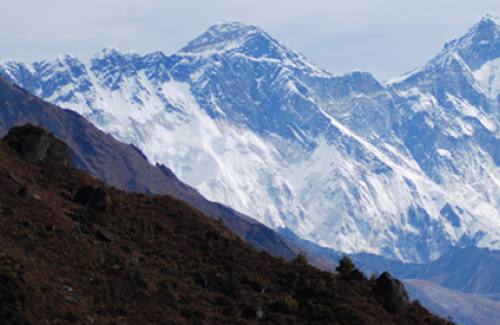
Everest Base Camp Trek
EBC Trek- Duration 17 Days
The Everest Base Camp is the adventure of a lifetime…
-
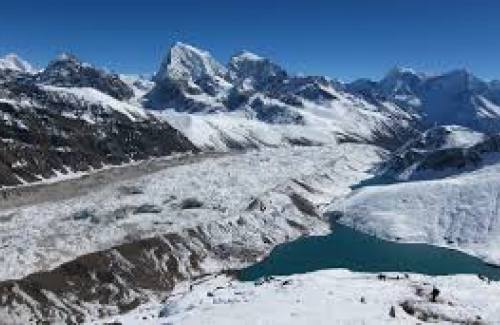
Chola Everest Base Camp Trek
- Duration 18 Days
Everest basecamp via Gokyo Chola pass trek is adventerous trekking…
-
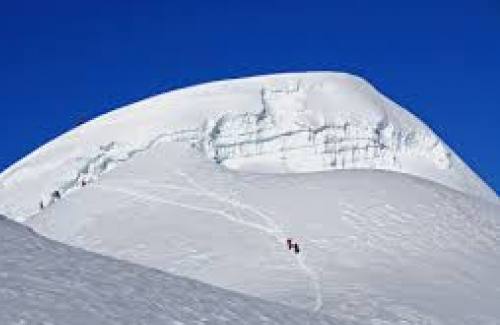
-
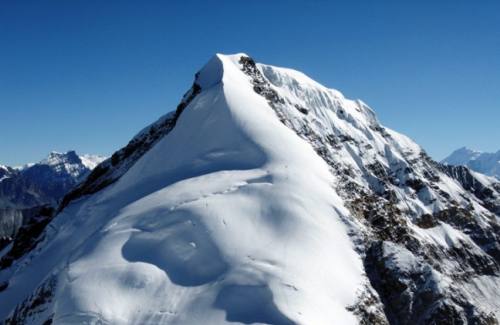
Chulu East Peak climbing
- Duration 5 Days
Chulu East is part of the Annapurna Himalayan range, within…
-
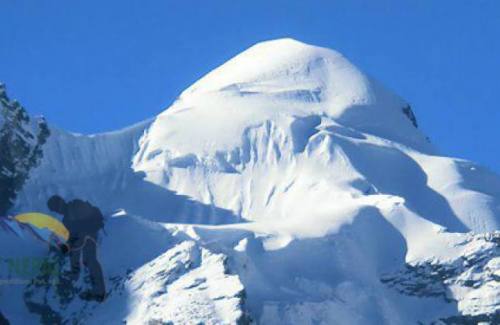
Naya Kanga (Gyanja La peak)
- Duration 17 Days
Naya Kanga (5844m) is shapely mountain rising to the west…
-
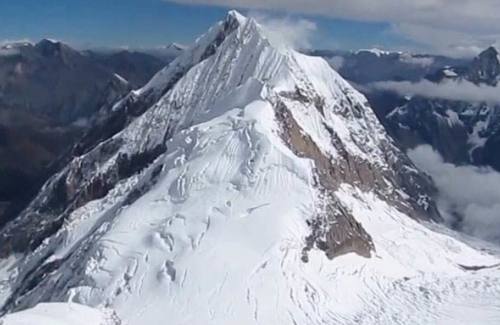
Manaslu Expedition
- Duration 56 Days
Manaslu (8,163 meters/26,781 feet) is the eighth-highest mountain in the…
-
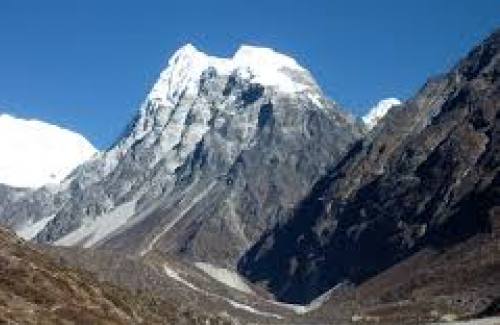
Baruntse Expedition
- Duration 33 Days
The potential for climbing "east of Everest" was first recognised…
-
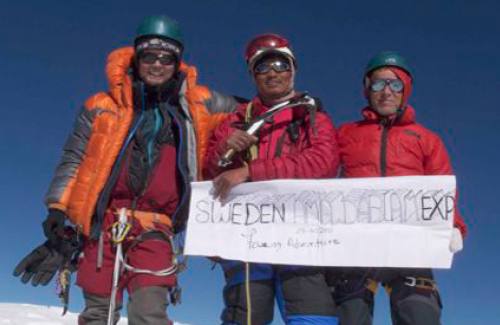
-
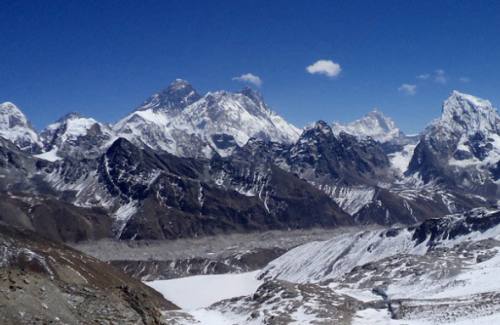
-
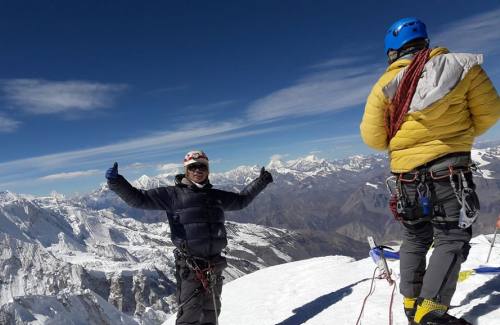
Himlung Himal Expedition
- Duration 30 Days
Himlung Himal, standing at 7,126m, is a popular climbing peak…
AFFILIATIONS
We are proud to join.





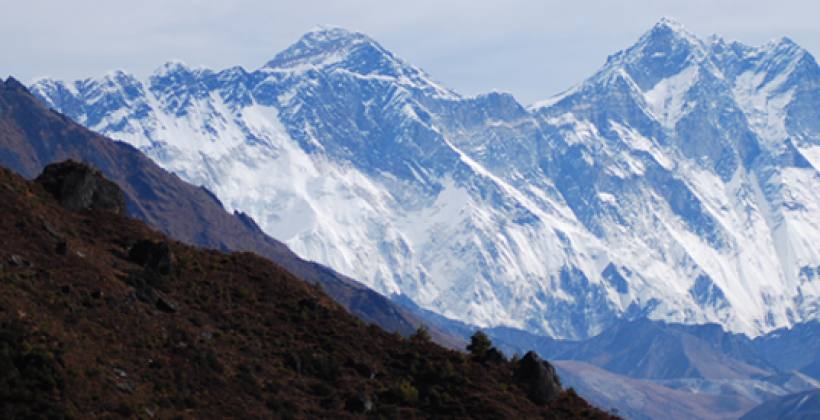

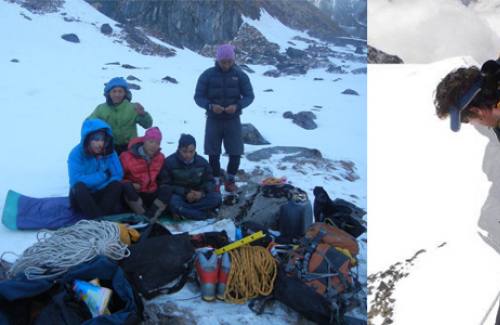
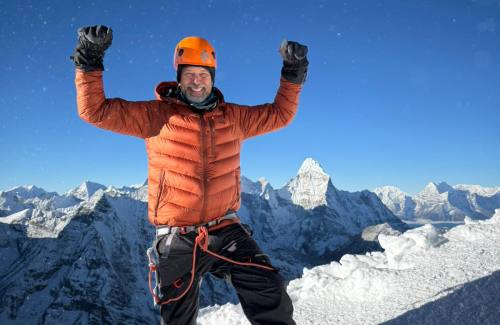
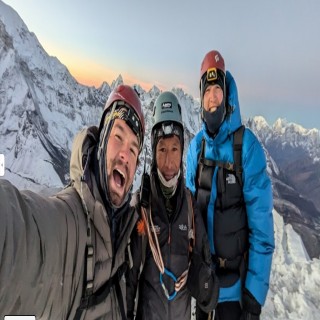
.jpg)

